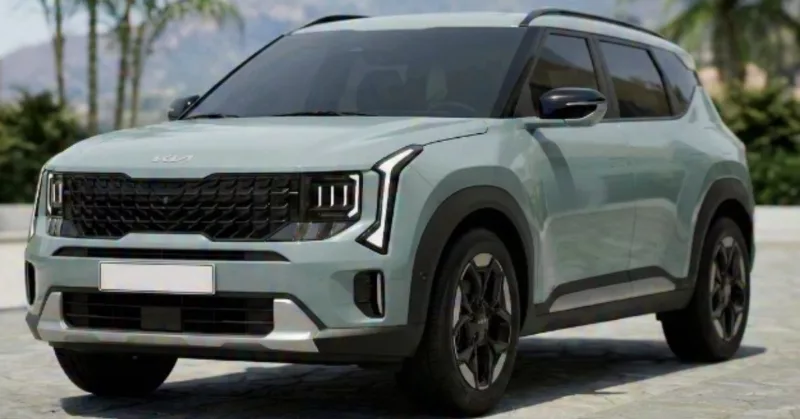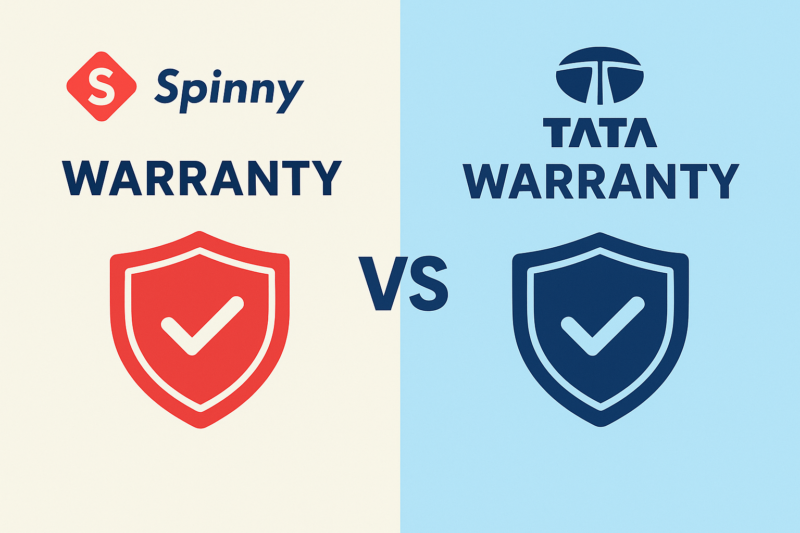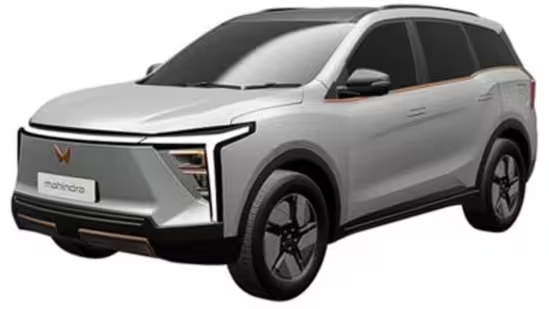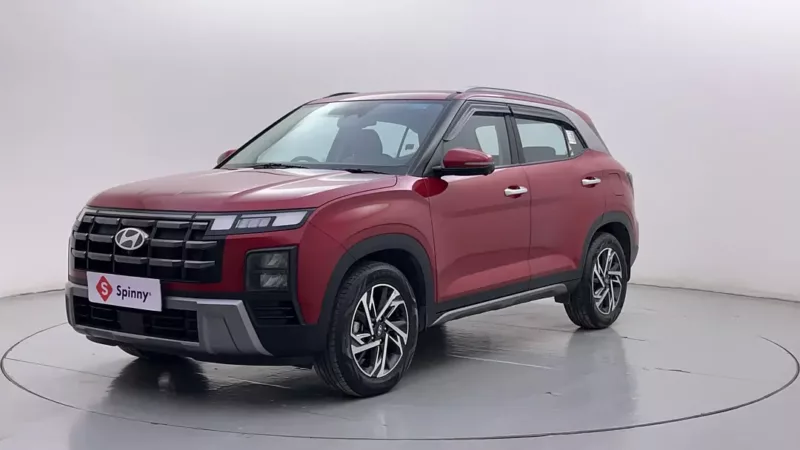Different types of car paint play an important part in honing its visual appeal and protecting the surface. Car paint is also one of the key factors that compels people to purchase it. A quality car paint gives additional shine and polish that adds production value and makes it presentable to the target customers.
Painting a car is not something that is done purely for aesthetic reasons, one should opt for repainting if the car has undergone severe scratches or collisions that have stripped the paint to expose the metal underneath. The exposed metal is prone to rust and rusted body panels diminish the car’s bodily integrity. Another reason to get your car painted is to protect the surface. Exposure to sun, rain and cold over time affects your car’s paint and if you see white blemishes on your car then these are signs that you need to get your car painted.
Other reasons include bubbling and discoloration of paint. Bubbling happens when the clear coat gets damaged and oxidation underneath the paint causes bubbles to form, which is a sign that the car needs a paint job.
Discoloration happens due to a botched clear coat job or at places where an abrasion has removed the clear coat. With the clear coat removed the color coat gets exposed to the elements and gradually begins to discolor. A paint job is required to prevent total loss of color.
Speciality Paint Types
These are not the kinds of paints you typically see in dealerships. These are typically used in speciality work, and if you want to paint your car to get noticed, they are well worth considering.
Chrome Paint
Chrome paint provides your vehicle with a highly reflective, mirror-like finish that cannot be ignored. Though not particularly practical for day-to-day use, it is well-liked in show vehicles and speciality, top-of-the-line work. This auto paint is both highly reflective and pricey.
Candy Paint
Candy paint is all about richness and depth. It employs a colour base coat, transparent colour coat, and clear coat to obtain that striking, layer-wise look. Applying it is difficult, so be certain your car painter is skilled.
Chameleon or Flip Paint
This is actually changing colour in the light and from angle to angle. You can see purple from one side and green from another. It’s such a dramatic, futuristic look that transforms your car painting project into a visual statement.
Textured Paints
Want your car to be like velvet or stone in appearance? Textured paints provide novel surfaces that depart from standard automotive paint finishes. Such paints are exceedingly rare and costly, and they’re mainly targeted towards enthusiasts who desire something absolutely one-of-a-kind.
What are the types of Car Paint Finishes?
1.Metallic Paint

Metallic paint adds a metallic shine to the aluminum powder component present in every solid paint colour. The metallic auto paint can be a bit expensive as it more effectively covers up all the minute damages done to your car than any of the Solid Paints, while also lasting longer compared to solid paints. Cons of metallic paint include fewer colour options, and difficulty in finding a match with your current car colour. Covering scratches and dings of metallic paint is costly.
2. Pearlescent Paint

The Pearlescent Paints are similar to the Metallic Paint, but instead of the aluminum powder, this paint contains ceramic crystals instead. The ceramic crystals refract and reflect sunlight, and as a result, the pearlescent paint is easier to maintain. It gives a different look to your automobile compared to the other car paints. The overall look it brings is stunning and glamorous. Another advantage of pearlescent paint is that it is harder to wear out than solid paints and thus is long-lasting comparatively. But matching the colour of a pearlescent paint is difficult, which makes it harder and costlier to repair.
3. Solid Paint

Solid paints are the most widely used paint finishes on cars, mostly because they’re easy to apply and easy to match. If you somehow managed to scratch the color you could easily repaint the section by buying a matching color pen or paint. Because of their widespread use and easy availability, painting your car in solid paint is cost-friendly.
4. Matte Paint

A matte paint absorbs most of the light thrown at it and gives a dull sheen to the car’s surface. Matte finishes are very rarely seen on cars due to the fact that they are very difficult to pull off, require very serious maintenance and are super expensive. Matte finishes aren’t very popular as they are available only in colors like black, silver or grey.
5. Satin Finish
The satin finish lies midway between gloss and matte. It provides the vehicle with a smooth, soft sheen, neither too bright nor too dull. The car paint finish is increasing in use in custom work due to its balanced appearance.
It is easier to keep than matte, but still requires the same care. For those who desire a special appearance but don’t want to go all out, satin automotive paint might be the best option.
6. Gloss Finish
Gloss is the most frequently used paint for cars, particularly on factory finishes. It provides the car with a reflective, shiny appearance that increases both colour depth and smoothness.
This is easy to maintain, quick to touch up, and suitable for daily use. If you want to have a clean and polished finish, use gloss car paint.
OEM vs Aftermarket Paints
If you’re looking to repaint your car, it’s important to understand the difference between OEM and aftermarket car paint. Both are intended to give your car a new, clean look, but how they are put on and how they last are quite different
What is OEM Paint?
Car manufacturers use OEM (Original Equipment Manufacturer) paint in the factory. In highly controlled factory settings, with robotic precision, OEM automotive paint provides consistent colour, durability, and finishing. In addition, it’s tested to withstand weather, heat, and wear and tear in the long term, providing peace of mind with warranty coverage.
What is Aftermarket Paint?
Aftermarket paint is used in touch-ups, full car repainting, or custom work, usually after accidents or in the makeover of the car. These paints can be of different quality and are greatly influenced by the car painter’s skills and the type of paint for cars used. It is not always exactly like the original paint job.
Quick Comparison: OEM vs Aftermarket
| Feature | OEM Paint | Aftermarket Paint |
| Applied by | Manufacturer/factory | Local body shops or paint specialists |
| Environment | Controlled, dust-free factory settings | Varies—depends on the workshop |
| Colour Matching | Perfect and consistent | May vary slightly |
| Durability | High—tested for long-term wear | Varies based on quality |
| Warranty Impact | Covered by vehicle warranty | May void warranty if not authorised |
| Customisation Options | Limited to original shades | Wide variety (solid, matte, chameleon) |
| Cost | Included in purchase price | Additional, depends on job complexity |
Which One Should You Choose?
If your car is brand new and only needs a small touch-up, OEM car paint is the way to go, If your car is new and all it requires is a minor touch-up, OEM car paint is the best option, particularly if resale and warranty are your primary concerns. However, in case you want to redo your car with your own personal finish or repair extensive damage, aftermarket auto paint provides more creative freedom and versatility.
Be sure to visit a reliable workshop and use best practices to repaint the car—how well the job turns out is as much about the painter as the paint.
Car Paint Coating & Protection Layers
A quality car painting jo is not merely slapping on some new colour. Your car’s glossy finish is the culmination of several properly applied layers with distinct functions in protection, longevity, and shine. Knowing these layers will enable you to make better choices in paint selection if you are about to paint your car or have it redone.
Primer Layer
The first coat that is put on after the car’s body is prepared is the primer. It smooths out blemishes, makes the auto paint adhere more adhesively, and shields the metal below from corrosion and rust. If you’re asking yourself what is the difference between paint and primer in auto repairs? This is it. Primer is surface preparation and protection, and paint is colour and sheen.
Base Coat (Colour Coat)
After the primer coat, the next is the base coat, or the colour coat. This is where the car gets the actual colour—solid, metallic, matte, or pearlescent. The base coat has no protectant ingredients in it, and therefore always requires to be covered with a clear coat.
Clear Coat
The clear coat is the last protective layer in theautomotive paint process. It gives shine and depth to the finish and protects the colour from damage from the sun’s UV rays, minor scratches, and weather conditions. A durable clear coat will also guard the car paint from oxidation and make the paint job last longer.
Optional Protection: Ceramic Coating or PPF
If you are purchasing a new car or simply got a paint car job done, you can think about including a ceramic coat or Paint Protection Film (PPF). These don’t alter the appearance of your car but provide another layer of protection from weather damage, road hazards, and bird excrement.
What is solvent-borne paint?
A solvent-borne paint is one that has got chemical solvents in it like lacquer, urethane, or enamel. Solvent borne paints are known for their durability and ability to prevent rust. These solvents constitute a major part of the paint and release harmful organic compounds upon drying. These harmful compounds degrade the environment and are a health hazard as a result their presence from the market is gradually dwindling.
What does Waterborne paint mean?
The waterborne paints do not use any solvents and are completely harmless as the only solvent used in waterborne paint is water. Waterborne paint can be applied on different surfaces like on top of a primer coat or a plain metal, or a newly applied coating. Waterborne paints are popular as they are environmentally safe and don’t release harmful organic compounds like solvent-borne paints.
How is car paint made?
The four parts that make a car paint are pigment, thinner, binder, and additives. These four elements are combined to deliver the perfect paint coating that fulfills the design requirements.
- Pigments help to provide colour and hide properties. There are two varieties available – prime and extender. Prime pigment imparts color and opacity while the extender pigment improves adhesion.
- Binders supply a binding effect that holds the pigment and forms a dry film. The binder promotes the performance of the car paint and adds quality – better gluing, resistance to scrub and fade, and the retention of glossy effect on the body.
- Solvents or liquids aid in mixing the paint and the binder together to give it the correct consistency.
- Additives act as a thickening element that provides density to the paint for better application. Additives help make the outpour of the paint hassle and splatter free.
What are the stages of painting a car?
Getting paint done on a car is not as easy as using a brush on a canvas. A lot of factors are needed to facilitate the car paint. These include:
- A closed place, where there is no dust and has excessive moisture around
- Requires proper tools for sanding, painting, and shielding the unwanted areas from being painted
- Treat the rusts and wipe out the dust from the surface before applying the paints
Preparation Stage: Sandblasting

Painting a car is a skilled process under which the car frame/body undergoes a procedure to remove the impurities on the surface to get a smooth finish, this is achieved through sandblasting that strips imperfections, paint, rust, and other contaminants from the surface. This is an important step as it cleans the surface that will hold a protective coating. To protect your car’s paint you could opt for Ceramic Coating or Paint Protection Film, but it is best if these are done at the time the car is purchased.
Stage 1: Primer
Following sandblasting is primer application, a primer is a kind of a paint that consists of resin, solvents and additives that prepares the car surface for painting upon. The use of the primer is the first step in automotive painting. This initial phase of primer application is crucial and cannot be skipped at any cost, as the primer helps to level the surface of the metal car body. At this stage, to remove any defects that result from manufacturing, the primer coat is essential. The initial primer coat aids to protect the metal body of the car from rusts, high temperatures, stone splinters, and UV rays of the Sun.
Stage 2: Base Coat
The second important step is applying the base coat or color coat. In this step, the colour of the car and its visual appeal come into existence. There are four different varieties of base coat – solid, metallic, pearlescent, and matte. Each of the four varieties have distinct properties, and give a different finish.
Stage 3: Clear Coat
The last stage in automotive painting is the clear coat application. The clear coat is a transparent coat applied atop the base coat. Since it is the final step of the car paint and comes in immediate contact with the surroundings, the clear coat must be long-lasting. It should have the ability to protect the surface coat from external abrasion, and its chemical properties should create resistance from the harmful UV rays.
Factors to Consider While Choosing Car Paint
Selecting the appropriate car paint is not simply the process of selecting your preferred colour. There is more to it, particularly if you want your car to be both appealing and durable, and suit your lifestyle.
1. Personal Style
Whether you prefer the drastic matte black or the tried-and-true metallic silver, your paint for car is reflective of your personality. If you’d like your car to turn heads, auto paint in either pearlescent or chameleon might be the best choice. If you like to keep things under the radar, solid or gloss finishes are classic.
2. Maintenance
There are some automotive paint finishes that are easier to care for than others. Gloss and solid finishes are easy to touch up and wash, whereas matte or textured finishes require special items and handling. Consider how much time you want to devote to maintenance.
3. Climate and Weather
Where you live plays a significant role. Strong sunlight can bleach out the colours more easily, and humidity can speed oxidation. Lighter shades reflect more heat and are less prone to dust, and they are therefore a wise choice in warmer climates.
4. Budget
Car painting jobs, particularly those incorporating candy, chrome, or pearlescent finishes, cost quite a bit of money. If your budget is limited, just get OEM colors or solid finishes.
5. Resale Value
Going too flashy can impact resale. Not everyone will like bright colors or unusual finishes. Neutral colors such as white, grey, or silver better retain their resale value.
So, before you paint your car, you need to ask yourself: how I want my car to look like, how maintenance are you prepared to deal with, and how long I am keeping the car.
Common Myths About Car Paints
There’s a lot of hype about car paint, but not all of it is true. Let’s dispel some of the myths that can confuse car owners, particularly if you’re looking to get your car repainted or have a special finish.
Myth 1: Matte Paint Scratches Easily
Matte Paint Scratches Easily Granted, it is true that matte automotive paint does not conceal scratches as well, but the paint itself is no weaker than gloss or solid finishes. It simply does not reflect light in the same manner, and imperfections are therefore more visible. That’s why maintenance is more important than anything.
Myth 2: Red Cars Fade Faster
It’s not only red—any vivid color tends to become faded more quickly with exposure to harsh sunlight if not protected. It’s all about the quality of paint for cars, how well it’s maintained, and if it was protected with a UV-clear coat.
Myth 3: Metallic Paint Is Impossible to Repair
Matching metallic car paint is challenging, not impossible. With the appropriate tools, methods, and expert car painter, even metallic touch-ups can be well-blended. It is more of a question of precision and not impossibility.
Myth 4: All Paints Are the Same
There are various types of car paints with distinct characteristics. Some are more suited to endurance, some to finish, and some to environmental sustainability. With this awareness, you are able to make the appropriate decision, particularly in repainting.
Paint Maintenance Tips
No matter if your car is new or newly repainted, properly taking care of your car paint makes all the difference. A well-maintained finish keeps your car in top condition and keeps it safe from damage in the long term. Here are some points to remember:
Regular Washing
Bird excrement and grime and dirt will dig into your auto paint if not wiped off. Clean your car periodically with a soft cloth or sponge and a mild auto car wash. Use dish soap on your car surface—this removes the wax and harms the paint for car.
Waxing and Polishing
Waxing is performed every few months to add a barrier on top of the automotive paint that repels water, minimises fading, and restores that new-car shine. Polishing is able to remove minor swirl marks and restore gloss.
Avoiding Swirl Marks
Swirl marks are also possible if rough towels or sponges are used. Microfiber cloths are always best, and washing in straight lines rather than in circles will help your car paint to remain smooth.
Protection from the Sun and Rain
Whenever possible, park your car in the shade or use a car cover. Constant exposure to UV rays and acid rain can cause the paint to oxidise and fade. A ceramic coating or PPF can also help extend the life of your auto paint.
When to Repaint
If you see signs like bubbling, rust patches, or fading clear coat, it may be time to paint your car again. Following best practices for repainting a car, like proper surface prep and using high-quality materials, ensures a better, longer-lasting finish.
Cost of Different Car Paint Types in India
If you are going to be painting your car, it’s helpful to know how much it is going to cost, since not all auto paint jobs are equal. The price can differ based on the paint type, the level of finish you want, and whether you opt for a full-body repaint or a touch-up.
Approximate Costs by Paint Type
| Type of Car Paint | Approximate Price Range |
| Solid Paint (Standard) | ₹12,000 – ₹25,000 |
| Metallic Paint | ₹20,000 – ₹35,000 |
| Pearlescent Paint | ₹30,000 – ₹45,000+ |
| Matte Finish | ₹40,000 – ₹60,000+ |
| Custom Finishes (Chrome, Candy, Chameleon) | ₹50,000 – ₹1.5 lakh+ |
These prices are for full-body car painting jobs. Touch-ups or panel-specific auto paint work will obviously cost much less.
OEM vs Custom Repaints
An OEM paint for car job is typically performed in the manufacturer’s approved centre and guarantees perfect matching and quality, although it is more costly. Custom or aftermarket painting is more flexible and has more options in finishes but the quality is not always consistent from workshop to workshop.
Insurance & Repainting
If you are repainting your vehicle following an accident, your insurer will cover it, provided it is an approved service. Cosmetic repaints or new color changes are not covered in general. Check with your insurer before painting car panels in an outside garage.
FAQs
What are the different types of car paint?
There are four types of car paint-
- Urethane –
- Highly resistant paint
- Easy to use
- Dries out faster
- Costlier.
2. Acrylic Enamel paint –
- Long-lasting paint.
- Two varieties are available – Single-stage (a mixture of a base and clear coat) and Two-stage (a basecoat and a clear coat applied separately).
3. Acrylic Lacquer –
- Gives a glossy effect
- Easy to apply
- Fades fast when exposed to UV rays.
4. Acrylic Urethane
- Gives a long-lasting effect
- Easy to apply.
- Paint dries if not applied fast
Which type of paint is best for a car?
Urethane paint is the most enduring car paint that does not fade away quickly. It can survive most acrylic paints that are usually water-based. Urethane paints are inexpensive and dry out quickly when applied. The finishing is stronger and better than acrylic enamel paints as it can last up to 10 years more than acrylic enamel finishing under similar circumstances.
What are the types of automotive paint finishes?
- Metallic Paint has an added layer of clear coat – it mixes a small amount of powdered metal into the paint coating, giving it a shiny surface.
- Pearlescent Paint has metallic powder consisting of ceramic crystals. These crystals help to reflect and refract light making the surface more shiny and appealing.
- Solid Paint is a cheaper and most used paint finish as colour matching is easy, and any minor scratch is covered-up with a touch-up pen.
- Matte Paint is difficult to maintain and requires particular products for upkeep.
What should be kept in mind while getting a new car paint?
Keep these points in mind while opting for a new car paint:
- Match the colour of your car before touching it up.
- Buy and apply environmentally safe paints
- Clean your car before applying any paint.
How to buy car paint?
Here are a few tips for buying car paint:
- If you choose the red colour for your car, remember it fades faster than the other colours.
- Polish your car to avoid fading, but never use wax matte on it.
- The brightest and safest colour in the palette is yellow.
- If you don’t clean your car regularly, get a grey or silver paint done, that will help you to hide dirt.



